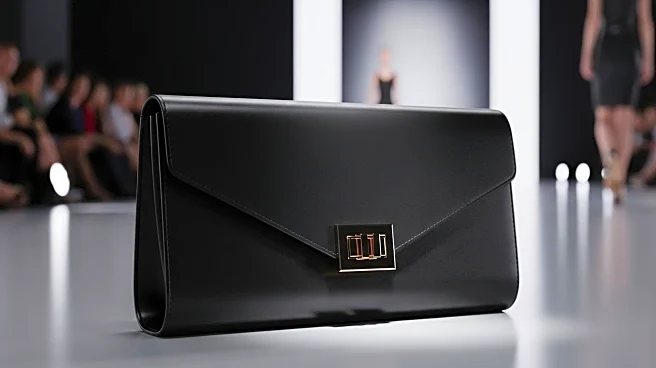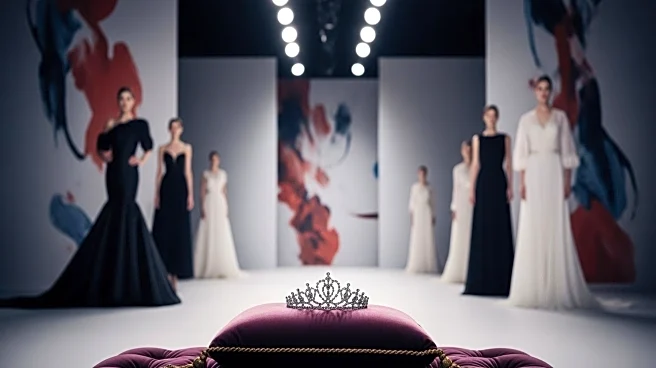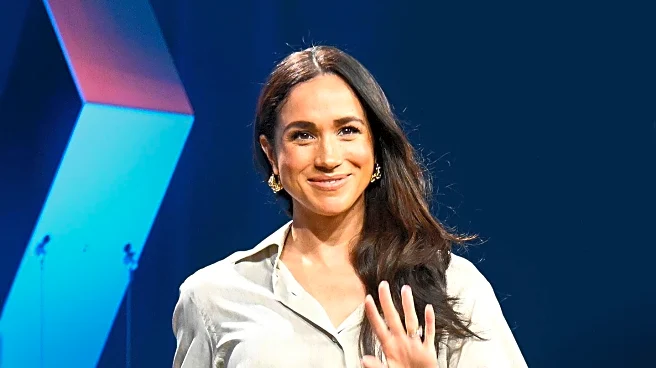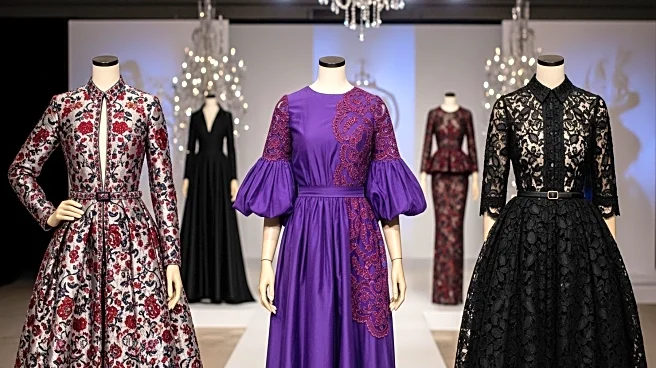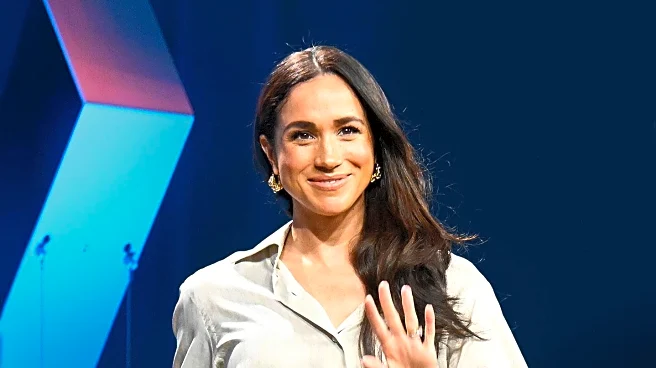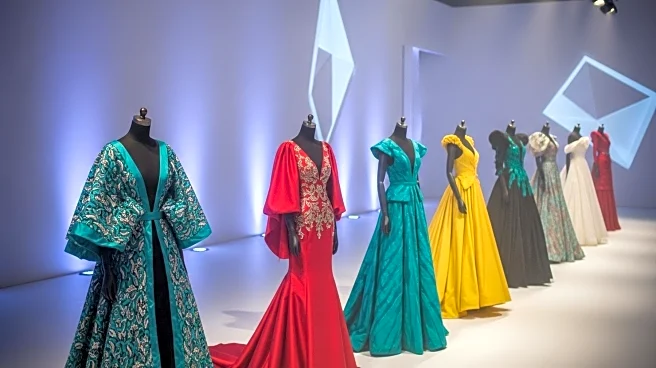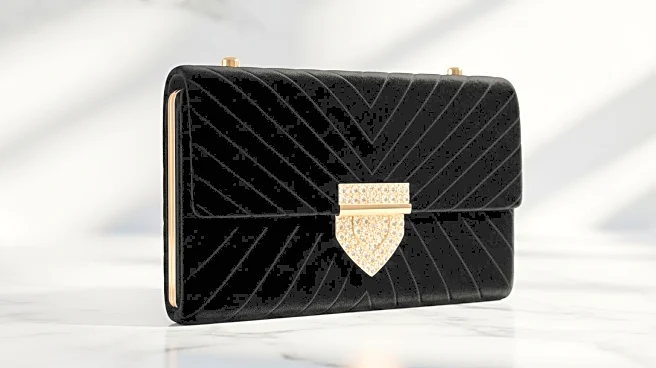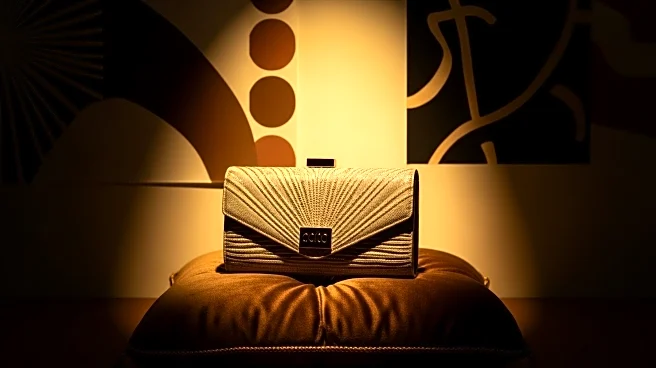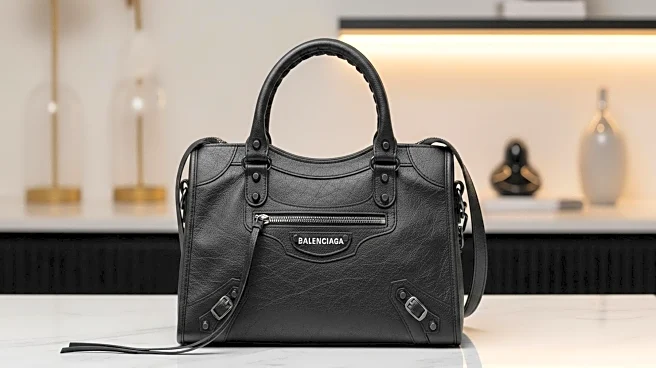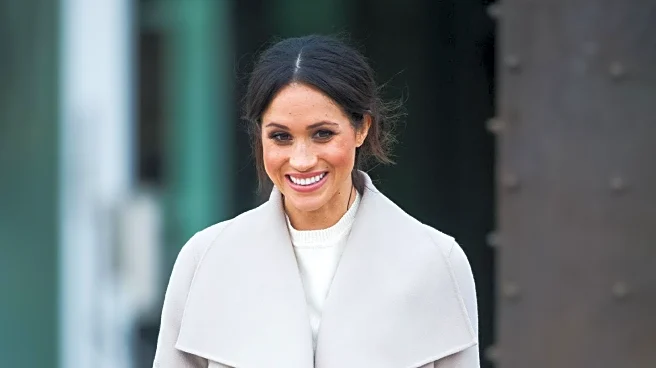What's Happening?
Emma Chamberlain attended the Balenciaga spring 2026 show in Paris, where she opted for an outfit that closely aligns with her personal style. Chamberlain, known for her fashion-forward choices, wore a cropped white button-up with extra-long sleeves and black capri pants, accessorized with a black City bag and pointy-toe pumps. Despite her usual aversion to low-waisted pants, Chamberlain embraced the look, describing it as a 'cool' choice. The event marked Pierpaolo Picciolo's debut at Balenciaga, attracting notable figures such as Meghan Markle, Isabelle Huppert, and Anne Hathaway. Chamberlain's stylist, Jared Ellner, emphasized the importance of the outfit feeling like an extension of Chamberlain herself, rather than a character portrayal.
Why It's Important?
Emma Chamberlain's fashion choices at high-profile events like the Balenciaga show highlight the evolving nature of personal style in the fashion industry. By choosing an outfit that reflects her personal taste, Chamberlain sets a precedent for authenticity and self-expression in fashion, which can influence trends and consumer behavior. Her decision to wear low-waisted pants, despite her initial reluctance, underscores the dynamic nature of fashion experimentation. This approach can inspire others to explore styles outside their comfort zones, potentially impacting fashion retail and design strategies.
What's Next?
As Emma Chamberlain continues to attend major fashion events, her choices may influence upcoming trends and inspire designers to create pieces that resonate with personal authenticity. Her presence at such events also contributes to the visibility and popularity of brands like Balenciaga, potentially affecting their market positioning and consumer engagement strategies. Chamberlain's influence in the fashion world may lead to collaborations or endorsements that further integrate her personal style into mainstream fashion.
Beyond the Headlines
Emma Chamberlain's approach to fashion, emphasizing personal style over character portrayal, reflects broader cultural shifts towards authenticity and individuality. This trend aligns with the growing consumer demand for personalized fashion experiences, which could drive innovation in fashion technology, such as augmented reality fitting rooms. As consumers seek more personalized shopping experiences, brands may increasingly focus on creating customizable and interactive fashion solutions.

